Roland’s synth lineup seems a little odd at times. It doesn’t really offer much in the midrange. Its only two pure synthesizers in the $500 to $800 space are the 13-year-old Gaia SH-01 and the eight-year-old (and objectively hideous) JD-Xi. The company has mostly been focused on its miniaturized classics in the range and building out its lineup for the last few years.
The company’s doesn’t perfectly fill this gap in the lineup, but it’s a big step in the right direction. It’s a synth-focused desktop groovebox with lots of hands-on controls, a rich sound engine, and a more than reasonable price of $650. The question is: In an increasingly crowded field of and , has Roland done enough with the 4d to carve out a niche for itself?
Photo by Terrence O’Brien / Engadget
The heart of the is built around Roland’s engine, but it’s not actually Zen-Core compatible. Instead, the company took the building blocks and arranged them into simplified oscillators. This is great news because, at least in hardware form, Zen-Core has primarily shown up either as overly complicated and menu-divey, or as a glorified . Here there are 11 different oscillators that range from emulations of classic Roland machines like the Juno-106 and SH-101, to metallic FM tones, PCM samples and 31 different wavetables. And there are enough hands-on controls that you can actually do some serious sound design without having to dig seven layers deep in an incomprehensible menu system. This is the closest Roland has come to knob-per-function in a long time, and the company deserves credit for that.
Thankfully, Roland also blessed the SH-4d with the larger, higher-res screen we’ve seen on machines like the Jupiter-XM and , rather than the painful two-line displays on the series and the , so navigating the menu is less aggravating. In general, the menu system also feels more streamlined than on a lot of other Roland devices. I’d stop just short of saying it’s intuitive, but it also didn’t send me into a .
There’s only a handful of things that felt like they required an unnecessary amount of menu diving: the effects, the matrix and the mixer, most notably. There’s obviously a limit to how many buttons and knobs Roland could fit on the face of the already pretty crowded SH-4d, but I’ve seen mod matrix patching handled more elegantly by both and . The four faders can be used in a mixer mode, which is great but you have to switch to pattern mode, then hit the sound button to access it, when it should really be a single button press away. And the effects section only exposes two parameters directly, everything else requires going into a menu.
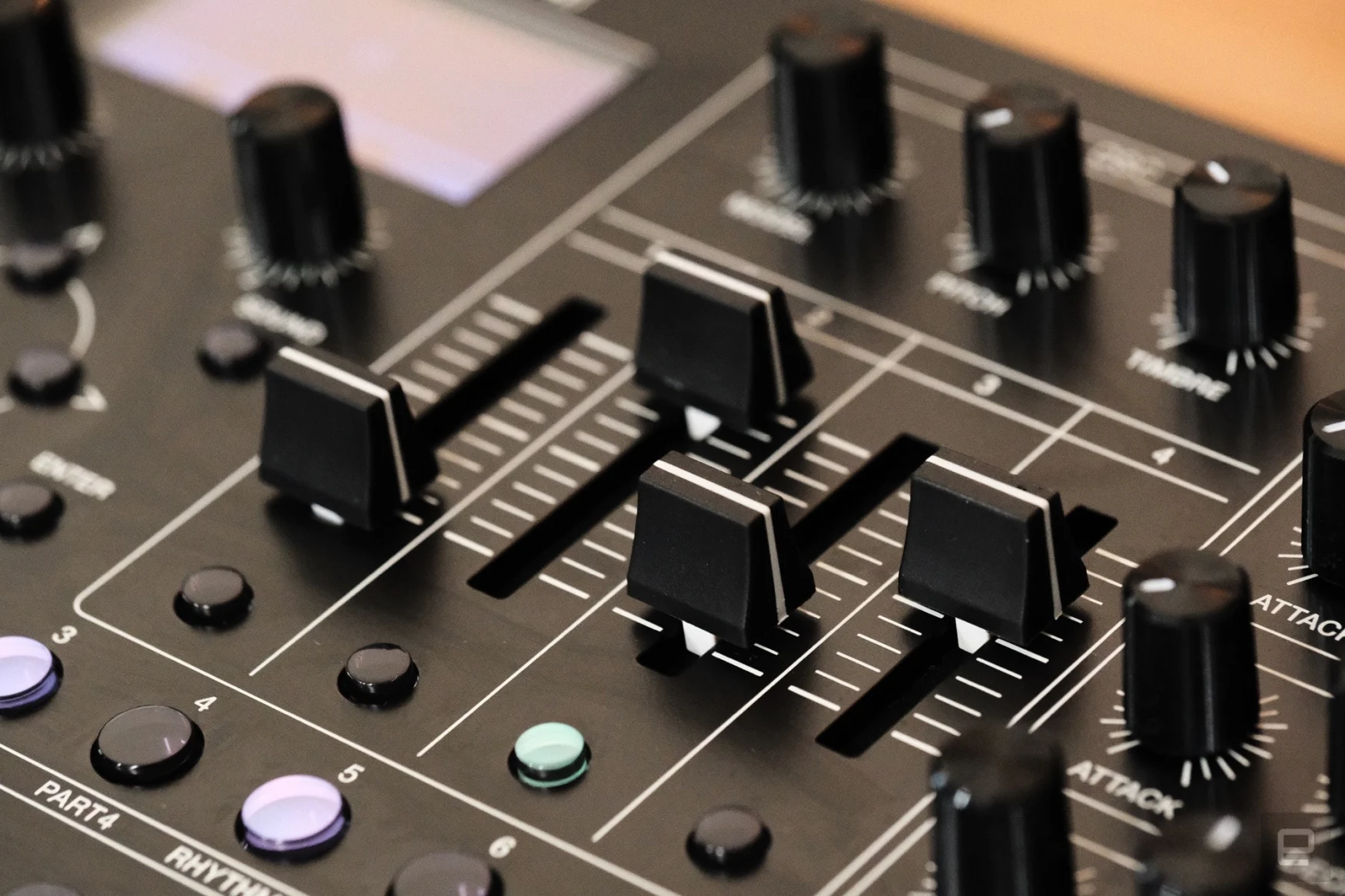

Photo by Terrence O’Brien / Engadget
The effects in general are pretty great, at least. The delay and the chorus are excellent. The reverbs are a bit lackluster, but there’s a whole suite of other effects (95 in total) ranging from an absolutely incredible bit crusher, to lo-fi vinyl warbles, to the DJ looper from the . And the fattener is so good I kind of wish it had its own dedicated slot like the reverb, delay and chorus do.
Brief aside: Why is there so much noise in the Juno chorus emulation, Roland? It’s basically unusable until you go into the menu and turn it down (or off), at which point it’s excellent. What’s truly wild is that it’s set to 30 by default and goes all the way up to 127! At full tilt it’s just a white noise machine. Great for the synth nerd who has trouble sleeping, I guess.
That one gripe aside, the SH-4d sounds incredible. Truly. I am not always the biggest fan of the Roland sound. I think its modern synths have a tendency to be a tad cold and clinical. But the 4d mostly avoids this (unless that’s the stated goal, such as in the Wavetable or PCM oscillator). The presets do an excellent job of showing off the unique characteristics of each model and even take some of them in places you might not immediately think of. Sure, the SH-101 is great at bass and leads, we all know that. But did you know it can also shine while playing mellow pads? Well, thanks to modern technology blessing us with a polyphonic emulation of one it can.
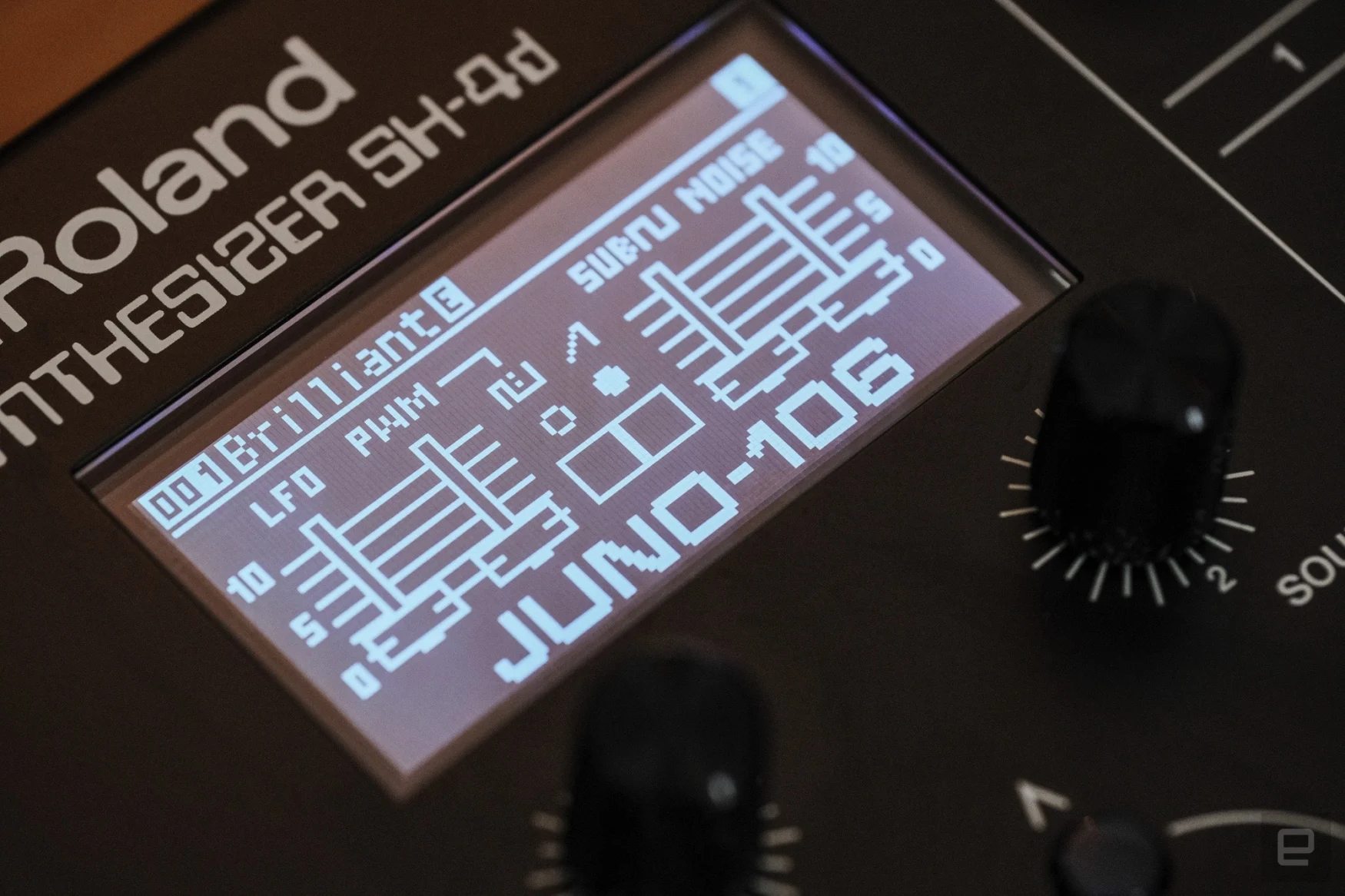

Photo by Terrence O’Brien / Engadget
Roland includes nice touches here, like graphically representing the layout of the Juno-106 and SH-101, or showing a ring modulator diagram on the screen. In general, the oscillators themselves feel carefully polished. The two knobs directly below the screen, the four faders and the four buttons below those have immediate and obvious uses usually that are reflected in some way on the display.
The middle two buttons under the faders are how you turn on and off the saw and square wave in the Juno model, for instance. And in the Cross-FM engine you can draw an envelope using the faders. Oh, and speaking of drawing, there is a drawing oscillator. Here you can create a completely custom waveform by using the four faders, by recording as you move a knob in real time, or step by step with incredible granularity. It is loads of fun and a quick way to get something that is completely your own. Another twist of the knob and you can square off the edges to get something that sounds like it’s straight from an Atari 2600. Then feed that through a bit crusher and *chef’s kiss*.
From here the signal goes through a simple high pass filter and a resonant multimode filter. The multimode filter is decent enough. It doesn’t self-oscillate, but it’s still pleasantly aggressive. I do wish the filter drive a bit stronger, though. It adds a little extra oomph, but doesn’t reach the giddy destructive highs of what Roland has in the SP-404.
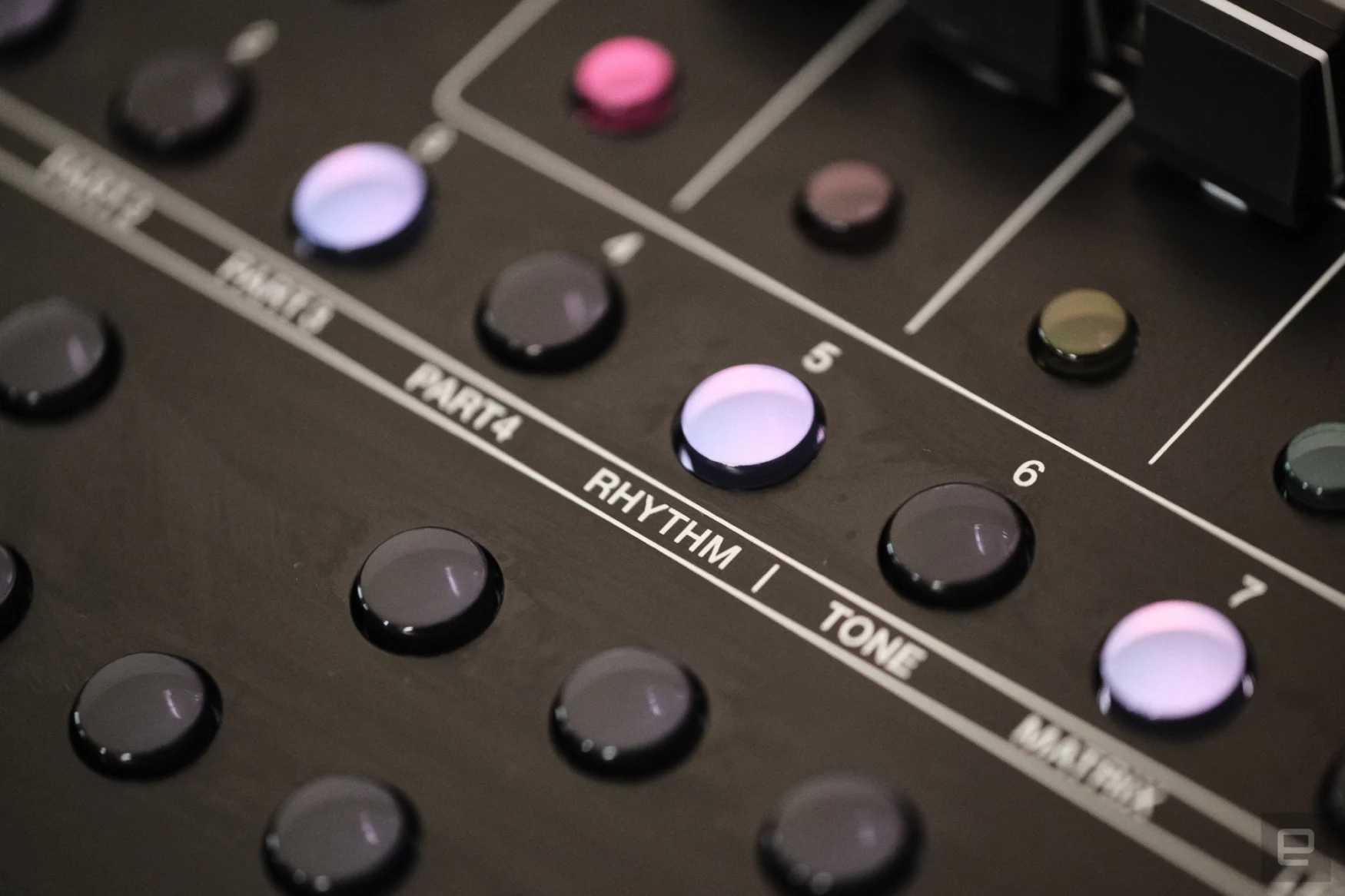

Photo by Terrence O’Brien / Engadget
All of this leads us to the sequencer, which is what makes the SH-4d more of a groovebox than a true synthesizer. There are four polyphonic synth tracks and one rhythm track that you can use to create loops up to 64 steps long. The sequencer is reasonably feature packed and mostly easy to use. Each part can have its own length, playback mode (forward, reverse, forward and reverse, inverted or random), shuffle rate and more. There’s also probability and substep options, though you do have to do a little menu diving to get there. And, while the keyboard on the SH-4d is not velocity sensitive, you can connect an external controller or dial in velocity manually on a per step basis. The only major limitation is the lack of pattern chaining or a song mode.
There’s a handful of performance-friendly features as well, like a master effect channel for buildups and breakdowns. Plus, you can mute parts and even individual drum sounds on the dedicated rhythm track. One thing missing is the Step Loop function found on even its cheaper instruments, like the recent Aira Compact S-1.
I’ve got to say the rhythm section is great, too. I was initially kind of skeptical of it. I really wanted Roland to just focus on making an approachable and affordable synthesizer, rather than continue its “everything and the kitchen sink” approach. But, it really is excellent and not an afterthought at all. There are 26 instruments in each kit, which can combine two different waveforms, with their own pitch envelopes and EQ settings. Roland probably could have gotten away with just tossing some 808 and 909 samples in here and calling it a day. But the rhythm section has its own rich and powerful sound design tools.
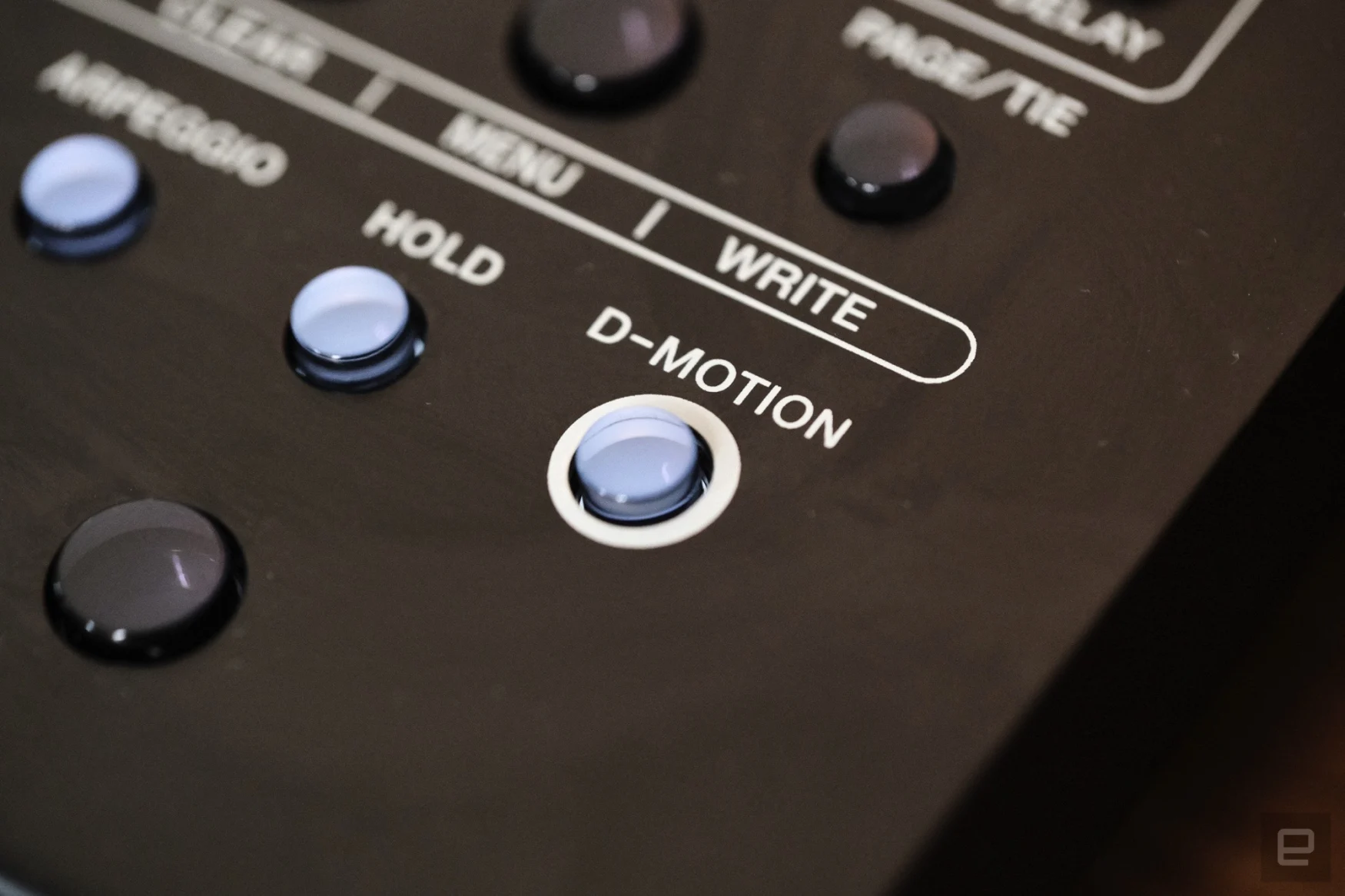

Photo by Terrence O’Brien / Engadget
Unfortunately, Roland didn’t stop at a five track sequencer with a surprisingly rich drum machine. There are a few features here that are a bit of a head scratcher. The biggest one being D-Motion where you can assign parameters to an X and Y axis, then tilt the instrument to change them. It’s gimmicky and pretty unnatural on something that’s over 14 inches wide and weighs just shy of four pounds.
The visual arpeggiator is in a similar boat. It has a handful of modes that allow you to control playback by bouncing notes, playing pong or drawing in a sequence Etch-a-Sketch style. I wanted to like them. But the reality was they were not particularly useful, not even for idea generation, and I grew bored with them after a few minutes. I’d have rather Roland used that D-Motion button on the front for something more immediately useful like quick access to a mixer mode, or Step Loop for creating quick fills.
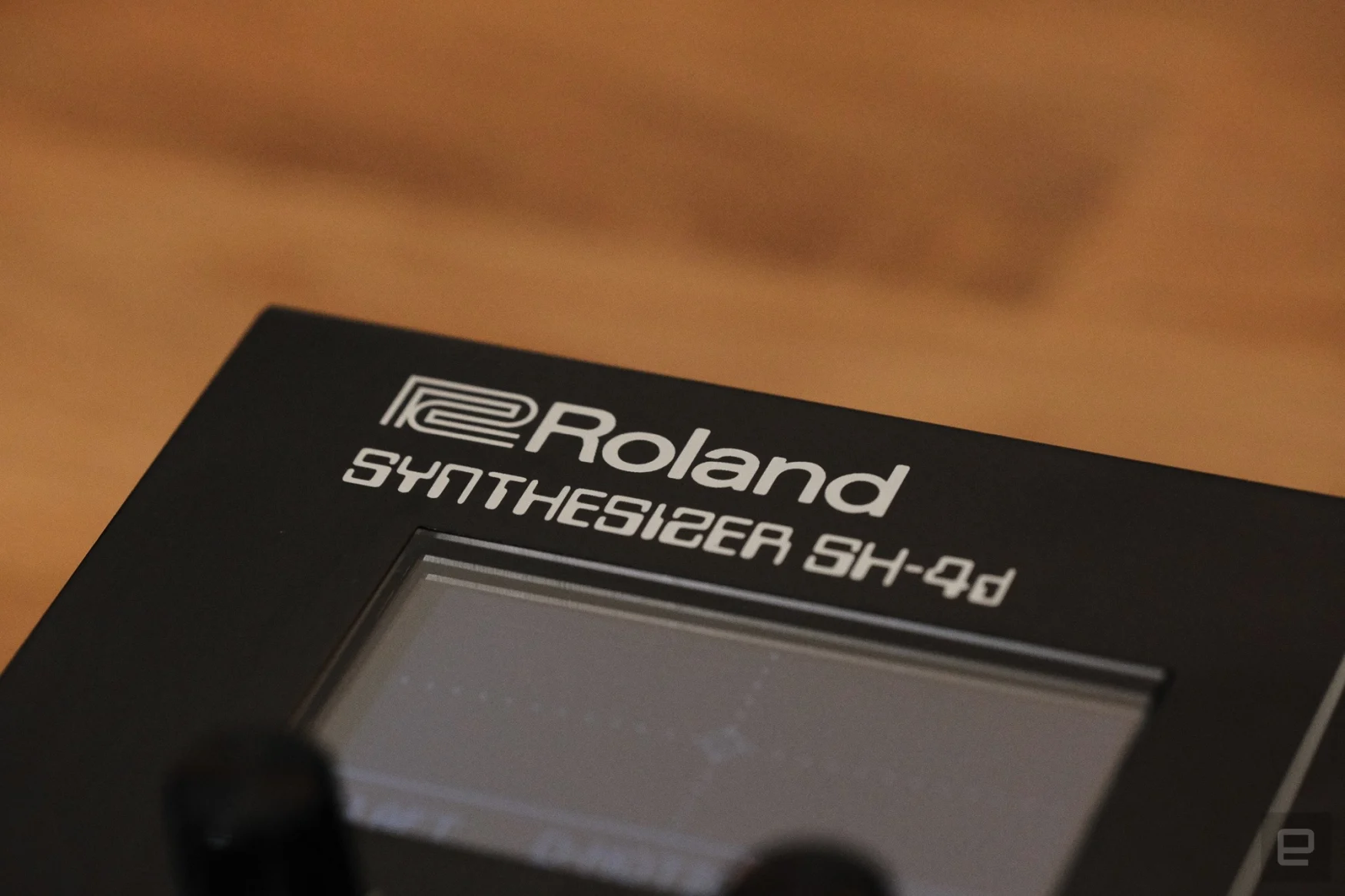

Photo by Terrence O’Brien / Engadget
On the whole, though, I think Roland has a winner on its hands. I’d love to see a version in the future with a proper keyboard – perhaps one with aftertouch. And I still have my struggles with the Roland workflow. But this is my favorite instrument from the company outside of the SP-404MKII, which is an entirely different beast.
The has plenty of hands-on controls, a rich palette of synth engines and it sounds great. Add to that a solid build, the ability to be powered by a handful of AAs, and a much cleaner interface than many other Roland instruments. The top notch drum machine and multi-track polyphonic sequencer are just icing on the cake. This is easily my favorite Roland synth in a long time. And the fact that it only costs $650 only makes it that much more appealing.
All products recommended by Engadget are selected by our editorial team, independent of our parent company. Some of our stories include affiliate links. If you buy something through one of these links, we may earn an affiliate commission. All prices are correct at the time of publishing.
This story originally appeared on Engadget

